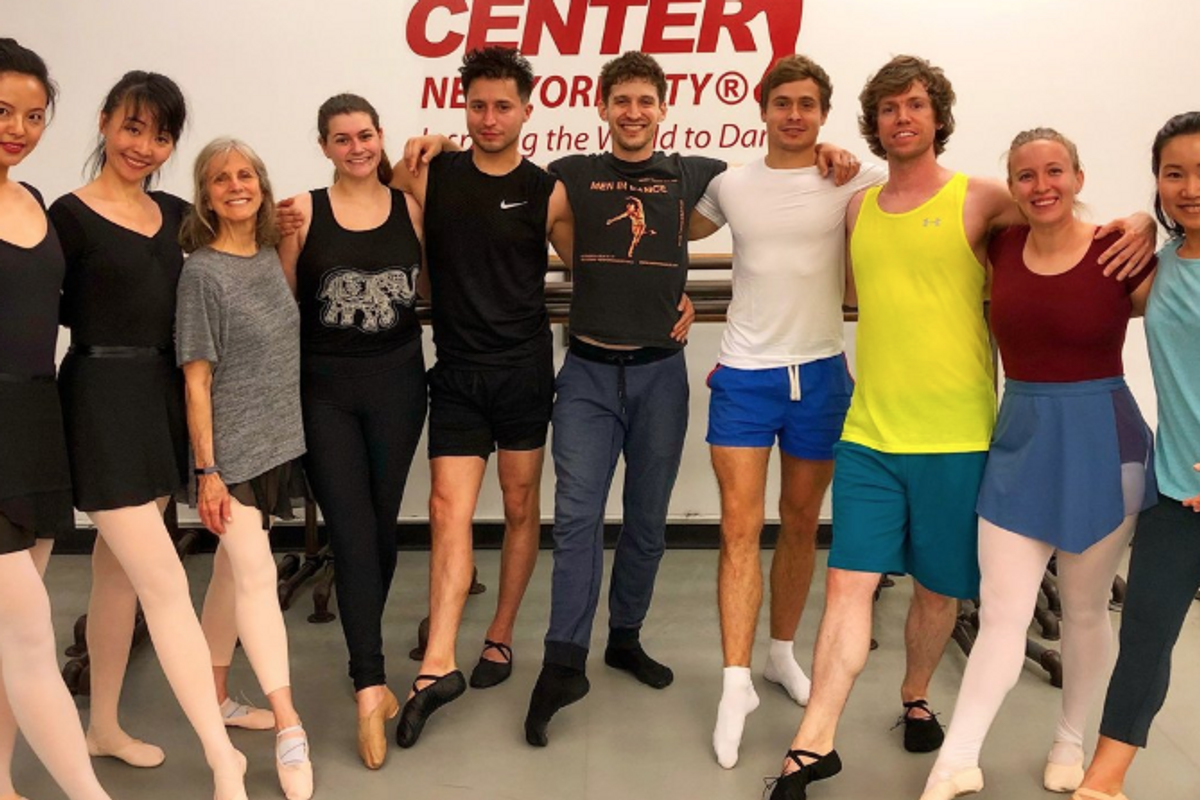
When most people think of dance students, they imagine lithe children and teenagers waltzing around classrooms with their legs lifted to their ears. It doesn’t often cross our minds that dance training can involve an older woman trying to build strength in her body to ward off balance issues, or a middle-aged man who didn’t have the confidence to take a dance class as a boy for fear of bullying.
Anybody can begin to learn dance at any age. But it takes a particular type of teacher to share our art form with dancers who have few prospects beyond fun and fitness a few nights a week.
When I first started teaching, I assumed that an educator with my performing credentials—Pacific Northwest Ballet, Houston Ballet, BalletX—would be swept up by a prestigious ballet program and that I would begin developing the stars of tomorrow. Like many expectations in my life, this one didn’t immediately happen the way I had envisioned.

Kerollis giving his niece a private lesson
Throughout my performance career, I had gained some experience teaching kids in a master class format. But I had never taught any regularly scheduled classes. When I was presented with the opportunity to teach weekly open ballet classes for adults at Koresh Dance Company’s school nearly six years ago, you can imagine my lack of excitement when I agreed to work with dancers who were very unlikely to become professionals.
Before I stepped to the front of the classroom, I did some research as a student in other adult beginner classes. I found that the focus was often on fun and charm. This meant that information was generalized, corrections were rarely specialized or hands-on, and classroom etiquette was infrequently enforced.
But I remembered how necessary it was to have instructors physically adjust me when I was training. I thought to myself, “How can these dancers ever understand technique if they aren’t shown how it feels to dance?” I also found myself incredibly frustrated by the students’ lack of awareness of certain etiquettes, like how to share a barre, when to ask questions and proper spacing in center.
Being a young teacher at the age of 28, I questioned whether adults (most of them my senior) would be open to me enforcing strict rules, or if they would adapt to me putting my hands on their bodies to convey placement or movement.
In the end, I decided to use the same approach with all of my students, from young pre-professionals to middle-aged recreational dancers and beyond. It is my opinion that whether a dancer plans to have a performance career or not, they all need to be taught to be ready to step onstage.
Once I finally started teaching, I was surprised to find how eager adult students are. While it took time for some to get used to my style of teaching, many would come to me after class to share how excited they were to be taught how to dance without being patronized because of their age.
I quickly learned that most adult dancers weren’t just in class for fun. Many were there because they were impassioned dance fans who wanted to know what they were watching onstage. This group of dancers inspired me to start my classes with trivia questions to teach them about the inner workings of our world. Topics I have discussed include the differences in methodologies of ballet training, how rankings work within professional companies, facts about historic and modern day repertoire, and much more.
I’ve also found that many of these dancers are high-level professionals in non-dance careers seeking an escape from their stressful jobs. Other students attend classes on a doctor’s recommendation to ward off the hazards of an aging body. Some didn’t receive the support they sought to pursue a dance career as a child. And, yes, there are actors, singers, traditional and non-traditional dancers who have taken my classes to enhance their other artistic practices or to prepare for dance auditions.

Kerollis and students in another 8-week Absolute Beginner Workshop at Broadway Dance Center
I have grown to love my adult students. While some kids I’ve taught take dance classes because their parents forced them to, each and every one in this group is lined up at the barre because they want to be there. Not only are they eager to learn, but they have a realistic outlook on their goals and know how to laugh at themselves. They are aware that they are unlikely to become professionals, but they still work just as hard as my kids with career prospects. And I have found that they are also the greatest supporters of my work as a choreographer and the biggest fans of my podcast and blog.
While my initial reaction to teaching adult dance students may not have been humble, I feel so lucky that they have shown me the value in teaching dance to all ages.




